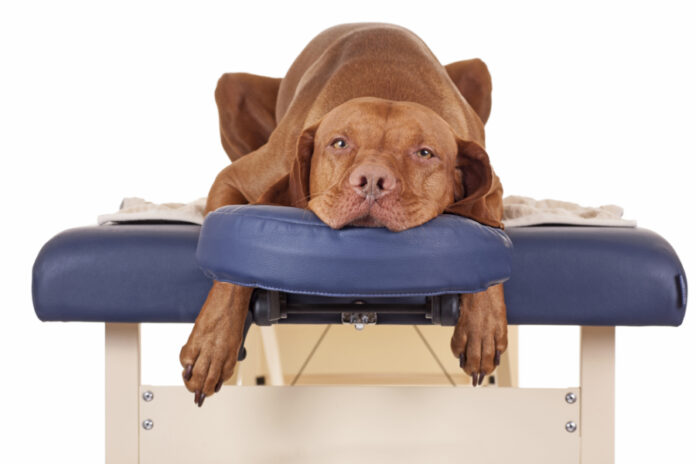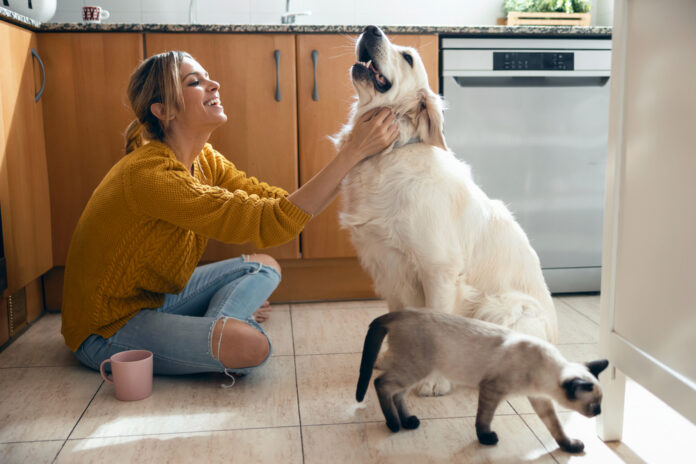What to do about your dogs hot spots

Hot spots are a common and frustrating problem, and can cause your dog a lot of discomfort and angst. These natural remedies can help.
Hot spots have many “pet” names, including summer sores and moist dermatitis. They can appear anywhere on your dog’s body, though they’re most often found on the head, legs, flanks, by the tail and behind the ears. Let’s look at what causes hot spots — and more importantly, what you can do to ease the discomfort and itching they cause.
WHERE DO HOT SPOTS COME FROM?
Hot spots have a variety of causes, from fleas, heat or a food sensitivity, to stress or something in the environment. But the most consistent factor is bacteria. Anything that irritates or breaks the skin can create the perfect environment for bacteria to grab hold, especially if the skin has a bit of moisture on it. Have you recently bathed your dog, walked in the rain, or watched him have a leisurely roll in the grass, or a romp in the
snow? What about all those pesky bugs that start coming out when spring arrives? These are all possible ways for hot spots to take hold.
Hot spots can grow as if they’re on “fast forward”. You might notice hair loss from all the licking, the sore may be bright red and feel sticky, there may be a yellowish color, and it might also bleed and smell.
Luckily, there are a range of natural remedies you can use to help alleviate your dog’s hot spots. Keep in mind that just as people are all different, so are our dogs, so while one remedy might work for one, it may not for another. Over the years, I have found that having a variety of remedies is the best way to go. Remember to always check with your veterinarian first.
NATURAL REMEDIES FOR HOT SPOTS
 Calendula
Calendula
Also known as pot marigold, calendula is great for hot spots, since it has both anti-inflammatory and antiseptic properties. Whether you grow your own (it has beautiful yellow and orange flowers) or purchase ready-made products, a calendula salve, tincture or tea may be just what your dog needs. If you grow your own calendula, simply harvest the flowers when they’re in full bloom, dry them on a rack or hang them upside down like a bouquet, and store them for future use.
Simple calendula oil blend
- Place dried calendula petals in a sterilized glass jar.
- Cover with first pressed/extra virgin olive oil or sweet almond oil — a combination of the two works well. The oil should cover the blooms by 1”.
- Cap tightly and gently shake the jar.
- Place the jar on a windowsill where it will get good light, and gently shake it each day.
- Wait four weeks, strain the blooms from the oil using cheesecloth or a fine sieve, then store your oil in another sterilized glass container (I prefer to use dark glass).
- When you want to use your calendula-infused oil, combine 15 drops with 1/2 cup of distilled water. Place in a small spray bottle and treat your dog’s hot spot several times a day.
Watch for Infection
It’s a good idea to trim the hair around a hot spot to prevent the spread of possible infection. This also allows you to see how big the hot spot truly is, because they can be very deceiving.
It is also important to determine whether a bacterial infection has already set in, so check with your veterinarian if in any doubt. Acidophilus can also be used “in a pinch” — sprinkle on the itchy area to help block bacteria from taking hold.
Tea
I am a big fan of tea for hot spots. The tannic acids in the tea work like cortisone and have a soothing effect. Apply a wet, warm black or green tea bag to the hot spot, and hold for four to five minutes. Then put a little aloe vera gel on the spot. Do this twice a day for three days. I really like the combination of plain old black tea and the gel from
an aloe vera plant.
Some people have had great success using a strong infusion of mint tea. Simply prepare a pot of boiling water, drop in a mint tea bag or loose tea, and let it steep for about 20 minutes. Let the tea cool on its own or pop it in the fridge, then bathe the hot
spot frequently. The mint infusion is very soothing, and some swear that the spot seems to disappear overnight.
 Plantain
Plantain
This common broad-leafed “weed” might be growing in your own backyard. Plantain reduces redness, inflammation, and itching. Simply take a leaf, chop it up, mash it into a paste, then apply the paste to the hot spot. It generally works very quickly for rashes, lesions, pimples, and other raw areas.
Goldenseal
Another remedy to consider is goldenseal, which is a member of the buttercup family. You can use the extract or purchase capsules from a health food store and apply the powder directly to your dog’s hot spot. It is a natural antibiotic and is used to stop infections and kill poisons in the body.
Manuka honey
Dr. Peter Molan MBE, a professor in Biochemistry at the University of Waikato in New Zealand, has been researching the healing properties of honey since 1981. Honey’s acidity or pH has been found to be low enough to hinder or even prevent the growth of
many types of bacteria. It may be that honey’s ability to absorb water from a wound deprives bacteria of the moisture it needs to thrive. Hydrogen peroxide also plays a role, because when honey is diluted by fluids from a wound, an enzyme is activated that produces hydrogen peroxide, an important antibacterial agent.
Honey’s UMF (Unique Manuka Factor) should be considered too. UMF is a phytochemically-derived antibacterial property found in some strains of Manuka honey. Honeys must be tested for this special antibacterial property. A UMF rating of 10 is the minimum recognized for having beneficial healing properties, and the term “UMF” on the label is a guarantee that the honey you have purchased has this antibacterial property.
Homeopathic remedies — Sulphur and Rhus tox
The homeopathic remedy Sulphur (30C) is used for all kinds of skin ailments. If your dog has hot spots, this might be just what she needs. Rhux tox (30C), meanwhile, is used for extremely irritated and red skin. Before using homeopathic remedies, however, you really need to do your homework and look at your dog’s symptoms. It’s best to consult with a veterinarian who specializes in homeopathy.




